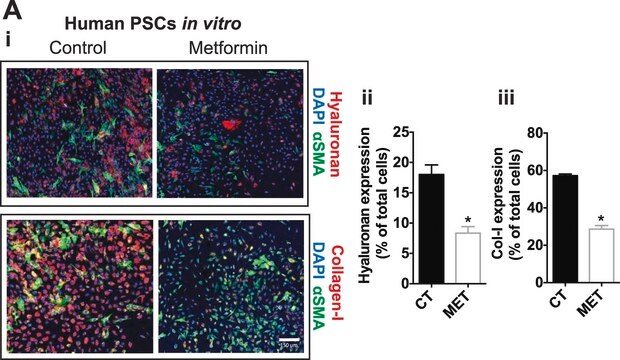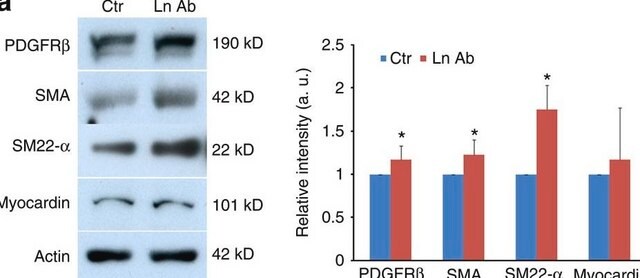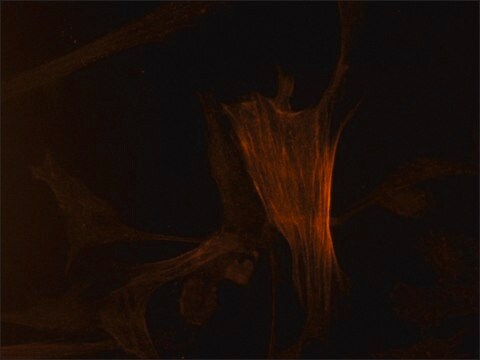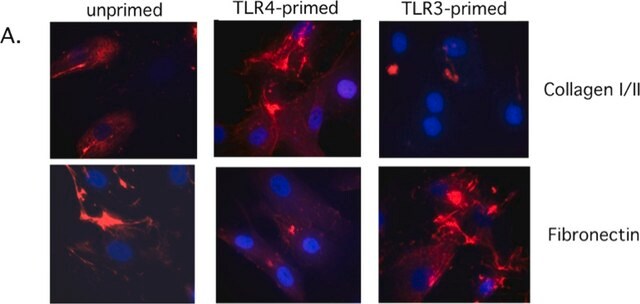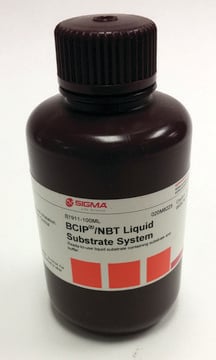A5691
Anticorpo monoclonale anti-actina, α-muscolo liscio
clone 1A4, purified from hybridoma cell culture
Sinonimo/i:
SMA
About This Item
Prodotti consigliati
Origine biologica
mouse
Coniugato
alkaline phosphatase conjugate
Forma dell’anticorpo
purified from hybridoma cell culture
Tipo di anticorpo
primary antibodies
Clone
1A4, monoclonal
Stato
buffered aqueous glycerol solution
PM
antigen ~42 kDa
Reattività contro le specie
human, mouse, rat, chicken, frog, canine, rabbit, guinea pig, goat, bovine, sheep, snake
tecniche
ELISA: suitable
immunohistochemistry (formalin-fixed, paraffin-embedded sections): 1:20 using human tonsil or appendix sections
western blot: 1:100 using chicken gizzard extract/ Mouse heart extract
Isotipo
IgG2a
N° accesso UniProt
Condizioni di spedizione
wet ice
Temperatura di conservazione
2-8°C
modifica post-traduzionali bersaglio
unmodified
Informazioni sul gene
mouse ... Acta2(11475)
rat ... Acta2(81633)
Cerchi prodotti simili? Visita Guida al confronto tra prodotti
Descrizione generale
Immunogeno
Applicazioni
L′analisi IHC del tessuto cardiaco murino colorato con x-gal è stata condotta utilizzando l′anticorpo primario, anti-actina muscolo liscio monoclonale di topo, per identificare i miofibroblasti.
Immunohistochemistry (1 paper)
Stato fisico
Altre note
Esclusione di responsabilità
Non trovi il prodotto giusto?
Prova il nostro Motore di ricerca dei prodotti.
Codice della classe di stoccaggio
10 - Combustible liquids
Classe di pericolosità dell'acqua (WGK)
WGK 2
Dispositivi di protezione individuale
Eyeshields, Gloves, multi-purpose combination respirator cartridge (US)
Scegli una delle versioni più recenti:
Possiedi già questo prodotto?
I documenti relativi ai prodotti acquistati recentemente sono disponibili nell’Archivio dei documenti.
I clienti hanno visto anche
Il team dei nostri ricercatori vanta grande esperienza in tutte le aree della ricerca quali Life Science, scienza dei materiali, sintesi chimica, cromatografia, discipline analitiche, ecc..
Contatta l'Assistenza Tecnica.

